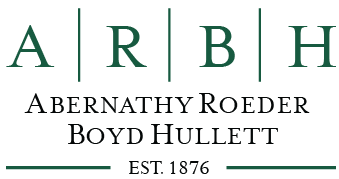Disclaimer: This guidance is subject to change due to the rapidly evolving situation surrounding COVID 19
COVID 19 Guidance
School Closings
- When should a school close?
Closing school early in the spread of disease for a short time is unlikely to stem the spread of disease or prevent impact on the health care system. The CDC recommends waiting to enact school closures until the correct time to allow for optimal impact. The CDC has put out the following chart to help make decisions regarding school closures: Please also refer to your board policies under DEA (Local) for emergency closure procedures. The authority to temporarily close schools lies with the superintendent. If a school district is advised to close the campuses by federal, state or local health authorities, the district should comply. If the district does not have guidance from local health authorities to close the schools, the district should exercise caution as it can lead to community panic. If the district does close due to potential exposure to the coronavirus, they should have the schools sanitized and disinfected. This includes disinfecting common spaces like the cafeteria, bathrooms and classrooms. The district should also disinfect shared school supplies like calculators, crayons and desks. The district should create internal regulations relating to telecommuting that addressesthe eligible employees for telecommuting, compensation, communication expectations, work schedules, time-monitoring, and equipment expectations. For a sample, emergency telecommuting policy, please contact us. During an unexpected closure, schools can leverage their participation in one of USDA’s summer meal program to provide meals at no cost to students. Normally these meals need to be served in a group setting but in a public health emergency, the USDA will waive the group setting requirement. Information regarding the program waiver request can be found here: https://www.fns.usda.gov/cn/child-nutrition-program-waiver-request-guidance-and-protocol-revised All Food and Nutrition Service (FNS) programs have flexibilities and contingencies for disaster or emergency situations. FNS programs include Supplemental Nutrition Assistance Program, Special Nutrition Program for Women, Infants, and Children (WIC) and National School Lunch and Breakfast Program. Information regarding FNS programs can be found here: https://www.fns.usda.gov/disaster/pandemic[2] The Texas Education Code states that the school must operate for at least 75,600 minutes per school year. Tex. Educ. Code § 25.081(a). If the schools are temporarily closed, the school district can add the additional minutes to the end of the school year. During times of disaster, the Texas commissioner of education can approver fewer minutes of instruction.[3] TEA provides allows for waivers of missed instructional days due to health and safety related reasons. The guidance is provided here: https://tea.texas.gov/texas-schools/waivers/state-waivers/state-waiver-types-attendance. If the district is open for business and telecommuting has started, the district should begin to offer teleconferences for grievances. If the district is closed, then the days will not be counted towards the grievance timelines. If the District is closed, the days do not count for PIA timeline. Additionally, the Attorney General does not count skeleton crew days observed by a governmental body as business days for the purpose of calculating that governmental body’s deadlines under the Public Information Act. A governmental body briefing the attorney general under §552.301 must inform the attorney general in the briefing of any skeleton crew days. If the briefing does not notify the attorney general of holidays the governmental body observes, the deadlines will be calculated to include those days.[4] It depends. Refer to your district’s Board Policy DEA (LOCAL) for information regarding payments to employees during emergency closures. Please note, in order to continue payment for employees during a period of closure, the Board of Trustees must adopt a resolution to expend the public funds for a public purpose. If you would like a copy of a draft resolution for your Board of Trustees’ consideration, please contact us. Pursuant to the Family Medical Leave Act (FMLA), closures in which an employee would not have been expected to report to work do not count towards an individual’s leave. If the individual would have been expected to conduct work during the period of closure, then the leave can continue to run. Further, if an employee chooses not to telecommute or perform other duties, as required by the District, during an emergency, then they can be charged for such leave. When School is Reopened The school should ensure procedures are in place to ensure that students and staff who become sick or arrive sick are sent home as soon as possible. The procedure should include measures to keep sick students and staff separate from well students and staff. The school is not expected to screen students or staff for the coronavirus.7 A school nurse can take the student’s temperature and provide a basic medical screening. For anything beyond a basic medical screening, the district should contact the student’s parent and refer the student to a local medical professional. Examples of more intrusive screenings include procedures like taking blood samples or conducting throat swabs.3 The CDC has recommended the following: If a student is experiencing symptoms of coronavirus, the student should stay at home until the student no longer has any symptoms and/or is cleared by a medical professional to return to school. If the school district learns that the student has the coronavirus, the student must stay at home until they are cleared by the local health department to return to school. The Texas Administrative code provides for when to exclude a student from attendance if they have or are suspected of having a communicable condition. The statute also provides conditions of readmission. 25 Tex. Admin. Code §97.7. If a student is not showing symptoms of illness but the school district suspects exposure of a student who is not currently sick, the school district should contact local health authorities for more information. Without guidance from local health officials, the school cannot exclude the students who are not showing symptoms of illness.3 The school district can continue educating the student who is absent. The school can send home assignments or use technology to provide instruction. The school can use teleconference, video conferences or the Texas Virtual School Network. For special education students, the district must continue to provide special education and related services. The district must determine whether the child is available for instruction and could benefit from homebound services such as online or virtual instruction, instructional telephone calls, and other curriculum-based instructional activities, to the extent possible. An Admission, Review & Dismissal (ARD) meeting should be held to make necessary changes to the child’s placement and the contents of the child’s ARD. If the ARD goals will remain the same but the time in special education will change, the ARD team may add an amendment to the ARD stating specifically the amount of time to be spent in special education.[6] Further, district should note a review of compensatory services may be applicable in the future The school should prepare to create a transition back to school life. The school should have counselors available for the returning student and periodically check in with the student and the student’s parent. The school should educate the students on why the returning student does not pose a risk and remind the students about the district’s policies regarding bullying, harassment & retaliation.3 A school district can consider the absence excused for any acceptable reason as outlined in the Texas Education Code § 25.087. If public officials identify the school as having exposure to an infectious disease, the district can excuse absences following the announcement. Once the district returns to normal, student absences for illness should be handled in accordance to the school district’s attendance policies. The student will not be counted as present for school funding purposes.3 When there is a concern with one of the schools participating in the event, nonessential travel for sports, other competitions or field trips may be canceled by the district superintendent or designee. The superintendent or designee should verify that the concern is legitimate.3 If schools are closed, the school should consider cancelling or postponing events such as after school assemblies and pep rallies, field trips and sporting events.[7] Yes, in conjunction with local health organizations, the district can ask questions or send conduct screenings to determine the likelihood of exposure of the virus. A school district cannot make any inquires based on a person’s race or national origin. The screening can be sent out to all of the students. Generally, The Family Educational Rights and Privacy ACT (FERPA) prohibits the release of identifiable student information without the consent of the student’s parent or guardian. An exception to the FERPA requirement is when there is an articulable threat to the health and safety of students. In the case where this is an articulable threat to the health and safety of the district can disclose information to any person whose knowledge of the information is necessary to protect the health and safety of the student or other individuals. The district must take into account the totality of the circumstances and determine that an articulable and significant threat exists to the health and safety of a student in attendance or another individual at the school. There is no need for there to be a declaration of a health emergency for this exception to apply. [8] The school district is required to mark the student’s education records with the articulable threat that was the basis for the disclosure and who the information was disclosed to. See 34 CFR §§ 99.31(a)(10) and 99.36. The record should be specific and show what individuals or organization the information was provided to. The parent is only entitled to receive information about their child’s disclosure. If the student’s name was included on a list, the parent is not entitled to see the entire list. The district should provide parent with any information the parent requests about the child. The school district can only ask the employee to submit to a medical examination if the employee is a direct threat to the health and safety of others. A direct threat is defined as a significant risk to the health or safety of the individual or others that cannot be eliminated by reasonable accommodation.[9] The school district must ensure there is objective evidence that that specific employee may pose a risk to the health and safety of others. The basis for the medical examination should not be based on irrational fears. The EEOC provided Pandemic guidance in the workplace and lays out four factors to determine if an employee poses a direct risk:[10] School districts should look to their local policy for guidance as well as most policies under DBB (LOCAL). Yes a district can ask an employee to stay at home if they pose a direct threat to the health of safety of the students and other employees. The district should confirm that the employee meets the factors laid out by the EEOC regarding direct risk. If the employee does, the district should first ask the employee to voluntarily stay at home. If the employee refuses, the district can consider an involuntary exclusion. Before considering an involuntary exclusion, the district should work with health professionals to makes that determination.3 Yes. The district can apply normal practices in regards to sick leave. The district should consult its local policies regarding employees being placed on administrative leave while awaiting medical examination results. If the exclusion is precautionary and the employee has not been diagnosed, the district should consider a paid administrative leave.3 Generally, the district can discipline an employee who refuses to come to work when the district is open. Exceptions to this apply if there is a reasonable accommodation that can be provided under the Americans with Disabilities Act (ADA). Warnings to districts regarding employment discrimination during this time A school board should already have in place an emergency operations plan (EOP) about addressing health risks such an outbreak of an infectious disease. The school district should review and update the EOP. This should be done in collaboration with local health departments. The district should focus on the parts of the plan that addresses infectious disease outbreaks.7 Below are helpful tools for the school to develop an EOP: Every district must also have a multi-hazard emergency operations plan in place as required by the Texas Education Code. The plan must provide for: Tex. Educ. Code § 37.108 If the district has a concern regarding the spread of coronavirus, the district should contact local and federal health departments. If a parent, student or employee report infection to the school district, the district should immediately contact the local health department of guidance. If there are no documented cases, the school district can continue with regular cleaning methods and can add additional preventative measures. If there is a documented case, the district should work with health officials to determine proper sanitization methods.3 Under the Texas Open Meetings Act, a school board can hold an emergency meeting to take immediate action if: In an emergency or when there is an urgent public necessity, the notice of a meeting or the supplemental notice of a subject added as an item to the agenda for a meeting for which notice has been posted in accordance with this subchapter is sufficient if it is posted for at least one hour before the meeting is convened. For any questions, please contact us at: Mari McGowan Chad Timmons Becca Bradley Sadia Ahmed [1] Center for Disease Control: Considerations for School Closures: https://www.cdc.gov/coronavirus/2019-ncov/downloads/considerations-for-school-closure.pdf [2] USDA: FNA Program Guidance on Human Pandemic Response: https://www.fns.usda.gov/disaster/pandemic [3] TASB: Responding to the Risk of Infectious Disease in Public Schools: https://www.tasb.org/services/legal-services/tasb-school-law-esource/students/documents/responding-to-risk-of-infectious-disease-in-public-schs.pdf [4] 2020 Public Information Handbook. Office of the Attorney General: https://www.texasattorneygeneral.gov/sites/default/files/files/divisions/open-government/publicinfo_hb.pdf [5] Center for Disease Control: Steps to Prevent Illness: https://www.cdc.gov/coronavirus/2019-ncov/about/prevention.html [6] United States Department of Education: Questions and answers on providing services to children with disabilities during the coronavirus disease 2019 outbreak. https://www2.ed.gov/policy/speced/guid/idea/memosdcltrs/qa-covid-19-03-12-2020.pdf [7] Center for Disease Control: Interim Guidance for Administrators of US Childcare Programs and K-12 Schools: https://www.cdc.gov/coronavirus/2019-ncov/community/schools-childcare/guidance-for-schools.html [8] United States Department of Education: FERPA & Coronavirus Disease 2019 (COVID-19) FAQs: https://studentprivacy.ed.gov/sites/default/files/resource_document/file/FERPA%20and%20Coronavirus%20Frequently%20Asked%20Questions_0.pdf [9] U.S. Code – Unannotated Title 42. The Public Health and Welfare Definitions, 42 U.S.C. § 12111 [10] Equal Employment Opportunity Commission: Pandemic Preparedness in the Workplace and the American With Disabilities Act: https://www.eeoc.gov/facts/pandemic_flu.html This article should not be construed as legal advice related to any specific facts or circumstances. This article is intended to educate readers. It is not to provide advice that will be the basis for action or inaction in any specific circumstance. Viewing these materials does not create an attorney-client relationship between ARBH and the reader or the reader’s institution. For circumstance-specific legal advice, please directly contact a licensed attorney.[/fusion_text]
(214) 544 4031
MMcGowan@abernathy-law.com
(214) 544 4042
CTimmons@abernathy-law.com
(214) 544 4055
RBradley@abernathy-law.com
(214) 544 4085
SAhmed@abernathy-law.com








Leave A Comment